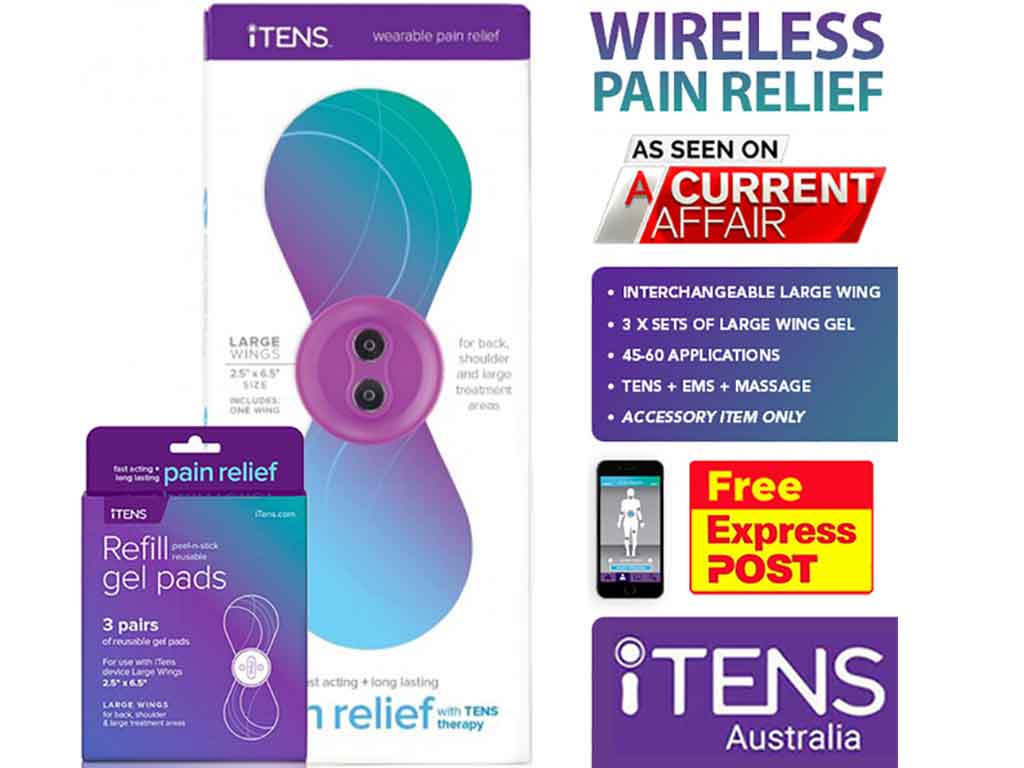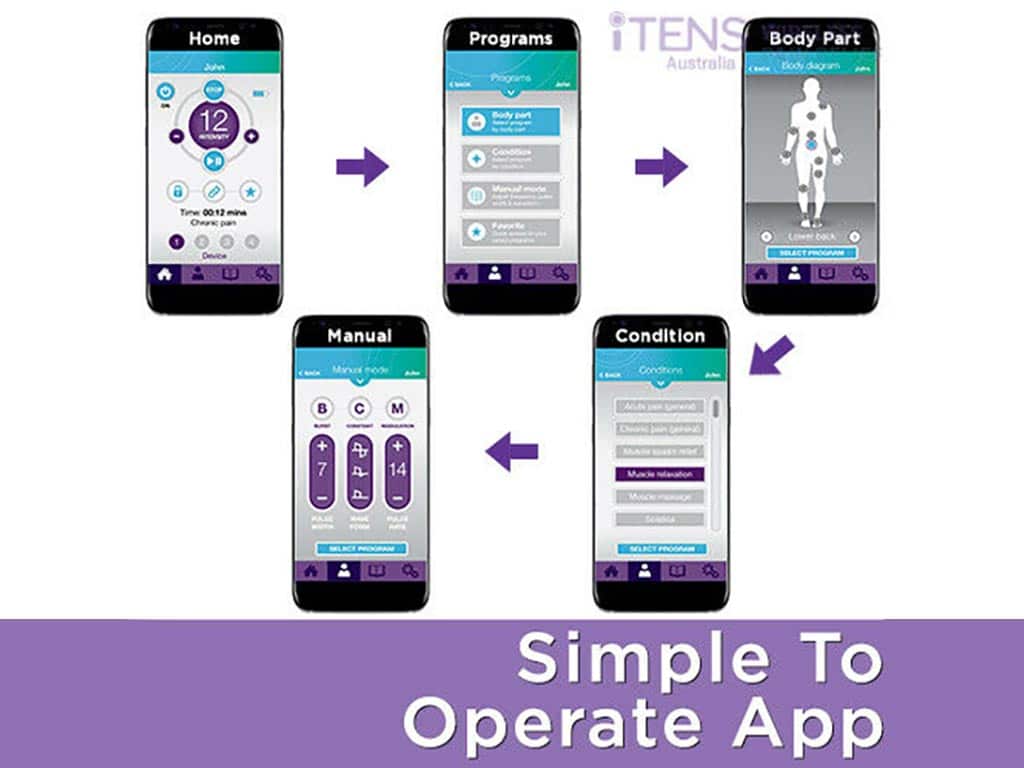
A TENS device for menstrual cramps is one of the effective methods to relieve pain. Transcutaneous Electrical Nerve Stimulation (TENS) is a therapy using mild electrical impulses to minimise discomfort. When the currents reach the nerves, they activate the pain-relieving mechanisms of the body. In particular, it interrupts the transmission of pain signals to the brain. Additionally, the pulses help divert the attention away from the pain. These help alleviate the symptoms and improve the quality of life.
Menstrual pain can range from mild to debilitating pain. Thus, many women seek various pain relief methods, such as over-the-counter medicines and hot water bottles. TENS therapy offers a drug-free, non-invasive, and hassle-free technique to manage pain. The device is easy to operate and safe for daily usage. The following sections will give more information on what a TENS machine is, how it works, and how to use it correctly.
What is a TENS Device for Menstrual Cramps
A TENS device for menstrual cramps is a small battery-operated unit that utilises electrical nerve stimulation for pain relief. The machine consists of a pair of electrode pads that deliver low-voltage electrical currents to the body. Moreover, it has adjustable settings to control the intensity and frequency of the pulses depending on the level of pain.
A TENS machine comes in two main types: standard and wireless. A standard or traditional device utilises wires to connect the power generator to the pads. On the other hand, the wireless TENS machine uses Bluetooth technology instead of cables. It connects to a smartphone app to control the stimulation settings. Hence, the absence of wires enhances portability, efficiency, and comfort.
Furthermore, most devices have preset modes for greater convenience. These are programs with predefined settings according to a pain area or health condition. Therefore, it delivers optimal stimulation without having to adjust the programs manually. Some of these modes are treatments for abdominal cramps and massage.
Advantages Over Other Treatment Methods
- TENS is an all-natural pain relief method. Thus, it does not carry the risk of side effects of oral painkillers.
- It does not have the potential to develop dependency even with long-term usage.
- TENS can provide immediate relief within minutes of application.
- TENS is not reliant on strict dosage. However, users should follow the directions, especially when setting the intensity level.
- It provides localised pain relief. The electrical stimulation directly targets the affected nerves without risking vital organs.
- The device is portable and lightweight, allowing users to move around while having therapy sessions.
- TENS is cost-effective compared to regular physical therapy sessions.

How a TENS Device for Menstrual Cramps Works
A TENS device for menstrual cramps works by stimulating the sensory nerves to interrupt pain signals. Firstly, high-frequency TENS (HF TENS) induce the nerves in the spinal cord that act as pain gate controllers to close. This action hinders the pain signals from reaching the receptors in the brain. HF TENS or sensory-level stimulation often gives immediate effects that are noticeable in minutes.
Secondly, low-frequency TENS (LF TENS) triggers the production of endorphins. These natural hormones inhibit the nerve cells from sending pain messages to the brain, leading to pain alleviation. LF TENS or motor-level stimulation may take time to take effect, but the results last longer even after the device is removed.
Additionally, TENS therapy boosts blood circulation, reducing swelling and inflammation that may contribute to muscle spasms or cramps. It is vital to note that TENS pain management may not work the same for everyone. Some may feel instant relief, while others take more time before feeling the analgesic effects. Also, the settings may vary with each individual according to their levels of pain.
Other Related Period Pain Conditions that Can Be Treated
Apart from menstrual pain or primary dysmenorrhoea, a TENS machine can be used to treat other period-related conditions. One such condition is endometriosis, a disorder in which the tissue that normally lines the uterus grows outside of it. This causes chronic pelvic pain and may aggravate during menstruation.
Another condition that can benefit from TENS is irritable bowel syndrome (IBS). It is a type of digestive disorder that causes abdominal pain and cramping. Women are more likely to experience its symptoms during their menstrual cycle. During IBS flare-ups, TENS can help relax the tense muscles in the abdomen to reduce pain and discomfort.

How to Operate a TENS Device for Menstrual Cramps
Before using a TENS device for menstrual cramps, it is essential to determine if it is the right mode of treatment. This is especially crucial for individuals with serious medical conditions, like cardiovascular diseases, epilepsy, and cancer. Then, clean the treatment area before applying the electrodes, removing oil, lotion, or dirt. Make sure the skin is completely dry for proper adhesion.
To operate the device, put the electrode pads on the pain area and turn on the machine. Adjust the frequency, pulse width, and other settings based on the type of pain or personal preference. Start with the lowest intensity and gradually increase to the individual’s comfort level. The electrical pulses should be firm but not too strong or painful.
Next, set the treatment duration for 15 to 30 minutes. After the session, turn off the device and carefully remove the pads. It is important to follow the specific instructions of the manufacturer or health professional for safe use. TENS machines can be used multiple times a day as long as there is a regular break of 20 minutes between treatment sessions.
Pad Placement Guide and Areas to Avoid
Correct pad placement is essential for effective treatment. For period pain relief, position the electrodes on the lower abdomen below the belly button and above the pubic region. Another suitable area is the lower back, on either side of the spine. Keep the pads one to two inches apart, and do not overlap them.
Meanwhile, be aware of the areas to avoid to prevent potential risks or harm. This includes the spinal cord, chest, throat, face, and head. Likewise, do not put the electrodes on broken skin, open wounds, and cuts. Alter the pad placement in case of skin redness or irritation.
Conclusion
TENS therapy is a safe and non-invasive way to manage painful periods. It is also a natural form of pain relief. The device works by stimulating the sensory nerves with electrical currents to reduce or block pain signals. With its adjustable settings, individuals can control the intensity of the pulses for maximum relief. Nevertheless, it is vital to check with a doctor before using a TENS device for menstrual cramps, especially if there are any underlying medical conditions.
To use the TENS machine for period pain, first place the electrodes on the lower abdomen or lower back area. Then, turn on the unit and adjust the settings. Keep it to a tolerable level and do not exceed the recommended intensity and treatment session. Remember to avoid certain body parts and change the pad location if necessary. With correct use, a TENS machine can provide relief from period cramps as well as manage other period-related conditions.




















